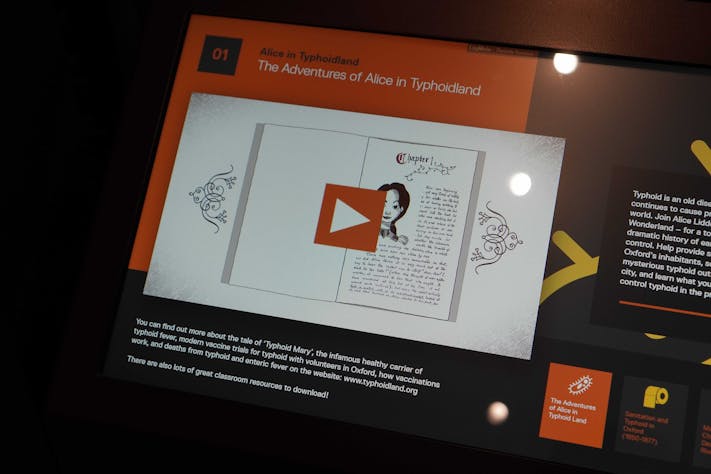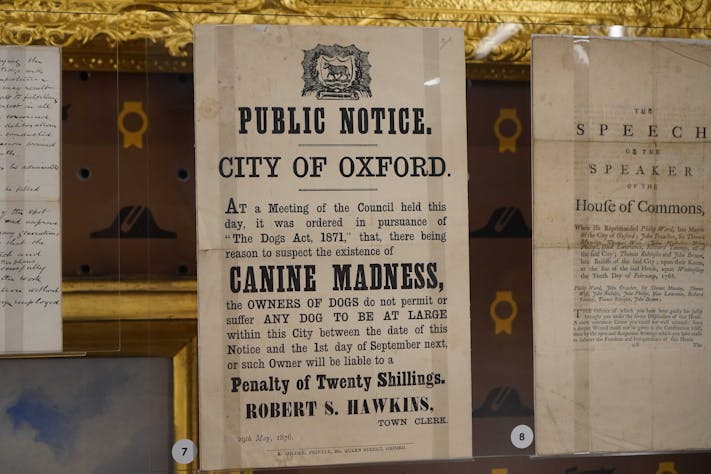The newly reopened and significantly refurbished Museum of Oxford, at the Town Hall on St Aldate’s, has risen to the challenge of providing a museum for all of Oxford, and created a fun and fascinating series of exhibits with something for everyone.
This is no mean feat. Oxford is a world-famous city: in the popular imagine it provides a kind of geographical shorthand for somewhere genteel and bookish – a place where the line between Harry Potter fiction and university reality is somewhat blurred. But as anyone who has lived here for more than five minutes is aware, that idea of Oxford is only one part of the city’s character – we residents live diverse lives, and our city has a history woven from many strands. The Museum of Oxford team have worked hard to reflect this, and in doing so they have managed to create a space in which you can expect to be surprised, informed and entertained – no matter how much you think you know about Oxford.
There are two main exhibition spaces (with wheelchair access to both via the main ticket office area), and rather than serving up a chronological account on the city’s history, they feature intriguing objects curated according to various themes – brewing, boating and bicycles being a few of the more obvious choices. This approach keeps things fresh – you let your curiosity be your guide, and move around the space in a non-linear way. I found that so much better than the ‘conveyor belt’ style some museums adopt – and these unusual, pandemic-tainted times, it also meant it was easy to navigate the space without feeling crowded.
There are lots of new activities for families – including a mini archaeological dig (complete with rubber ‘mud’ and toddler-friendly tools), opportunities for dressing up, and a kind of magical Oxford story desk, which lights up and plays videos when you place your chosen historical object on it. There are also plenty of interactive displays and audio options.
The Museum of Oxford team are clearly determined to ensure the museum is an inclusive space, with a dedicated exhibition area created in collaboration with various community groups, which allows you to learn more about their experiences. LGBTQ+ history is also present – for example, in the pub map, and the inclusion of the original Pink Times as a ‘story table’ object. The eclectic layout of the overall space also provides flexibility – there’s a sense that this reopening is a starting point, and over time some exhibits may change, without altering visitors’ flow.
Everyone will have their personal preferences – mine included an 1876 council poster about ‘Canine Madness’ (I’m a lurcher owner, so I would probably buy a print if I could!), the gruesome-yet-intriguing ‘knuckle carpet’ (an Oxford butchers’ unusual flooring, made up on animal bones), and the hand-painted folding table from a traditional narrowboat. The biggest surprise for me was seeing an example of the spikes used to divide residents in Cutteslowe, as part of the wall which cut the area in two. It acts as a particularly effective reminder as to why Oxford needs a museum which reflects the many facets of the city’s history, and does not simply present the ‘dreaming spires’ version. There are still divides within the city, even if they no longer have such obvious markers, and it is important to have a museum for everyone.
With that in mind, I would encourage all local residents to visit – it’s free to enter, and you don’t need to pre-book (although it is encouraged, in order to avoid disappointment during busy times). There’s also a fabulous community learning space downstairs – perfect for school visits, workshops and social events. The Museum of Oxford is our newest shared resource as a city: let’s go and enjoy it!








